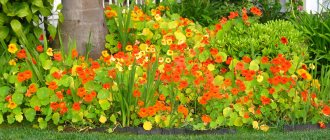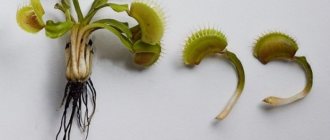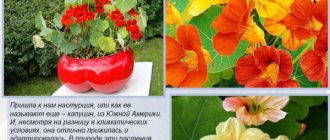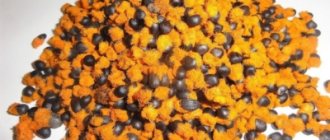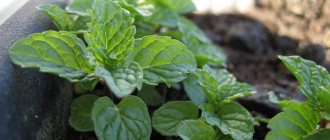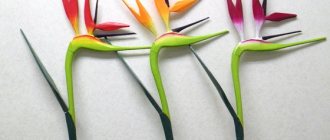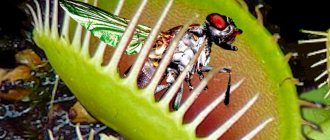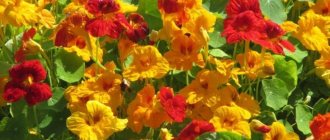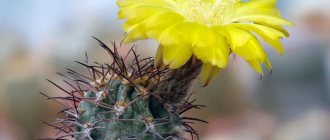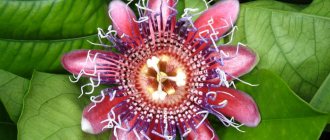07/15/2019 Irina Malinina 0 comments
Would you like to have a beautiful flower in your flowerbed, which in its properties is a garden nurse, cures many diseases, and is also suitable for food? Then pay attention to the nasturtium flower.
It prevents the spread of fungal infections, fusarium, root rot and nematodes. It is avoided by aphids, beetles, earth flies and other insects. Absolutely all above-ground parts of the plant are edible and contain a storehouse of vitamins. In many countries, dishes seasoned with nasturtium are considered an exquisite delicacy.
Would you like to try a savory salad or sandwich spread made from the flowers and leaves of this amazing plant? It's just a matter of small things - plant it in your garden plot, and then enjoy the beauty of the flowers, their taste and medicinal properties. And we will tell you how to do it correctly!
Nasturtium flower - botanical description
What is nasturtium? This is a herbaceous annual or perennial plant native to South America. Its natural range is from Peru to New Grenada. Nasturtium is very decorative; it was liked by the Spanish conquistadors who conquered Peru in 1580, and was brought to Europe as a trophy along with a considerable number of other South American plants.
Nasturtium was given a Latin name - Trophaeolum, which translated means “trophy”, “sign of victory”. The second name for nasturtium is Capuchin. So they began to call it because of the specific shape of the flower, which has a spur, so similar to the hood of the Capuchin monks.
Nasturtium is a perennial, but in cultivation it is grown as an annual. It is too thermophilic and cannot survive the frosts of central Russia.
What does nasturtium look like? The plant is often found in the form of vines 1-2 m in length, but can also grow as a bush, the height of which can start from thirty centimeters and end just above half a meter.
The stems are very juicy and well branched. The bright green leaves with slightly wavy edges have an unequal, rounded shape, 2.5 to 6 cm long, with a long petiole in the center. The leaves grow alternately.
The flowers are very bright, solitary, and have a pleasant aroma. Each flower usually has five petals, but sometimes their number can be greater - decorative varieties can be double or semi-double. The funnel-shaped tube “stores” nectar, which insects feed on and at the same time pollinate flowers. Nasturtium five-leaf is pollinated by exotic hummingbirds.
Each flower has an original spur, thanks to which the plant received its second name Capuchin. The color palette is warm. All shades of yellow, red, orange, cream. Many flowers on the petals have variegated contrasting spots, strokes, lines, which only increases the decorativeness and variety of colors.
Flowering begins in June and continues throughout the growing season, until the first frost.
The fruits are prefabricated achenes, consisting of three parts - kidney-shaped lobes of a round shape with a wrinkled surface. The seeds are also rounded and kidney-shaped. Their ripening period is August-September.
Description
The plant in its natural habitat is a perennial, however, in the harsh Russian climate, nasturtium can only be grown as an annual, due to the delicate structure of its roots. But the flowering period of nasturtium is long, and it has an extremely unpretentious character, for which it is especially loved by gardeners.
Nasturtium is widely used in landscape design. It can be used to decorate flower beds, borders, hanging flowerpots, and to carry out vertical gardening of trellises, gazebos, even the walls of a house.
Nasturtium from seeds
The flowers of the plant are small - about 5 cm in diameter; simple varieties have five petals, double ones - more. The color of the petals is varied: the entire palette of yellow and red is represented, as well as transitional shades between these colors. There are also two-color specimens that are particularly decorative. Now breeders have already developed nasturtium varieties with such unusual petal colors as cherry, cream, raspberry, and pink.
Video shows how to grow Nasturtium from seeds:
The flower itself is a funnel, decorated with a small decorative proboscis, which serves for pollination. The aroma of nasturtium is very pleasant, sweetish, delicate.
Popular types and varieties
The Nasturtium family includes about ninety species, but no more than twenty-five are used as ornamental ones. Let's look at some of them, as well as photos of nasturtium.
Foreign nasturtium (nasturtium canary)
A powerful climbing plant with lobed leaves and small yellow flowers reminiscent of a hummingbird or an exotic butterfly. The shape of the flower is truly original - the petals are jagged, corrugated, intricately curved. They call it “canary” because of its bright, rich yellow color. After flowering, a gnarled fruit is formed. In temperate climates, seeds often do not ripen, so self-collection is impractical.
Flowering is long-lasting, beginning in June. The length of the vine is 3.5-4 meters.
Large nasturtium
The bush reaches one meter in height. The stem branches well, the structure is juicy and fleshy. The leaves grow on long petioles, are round in shape and range from 3 to 15 cm in diameter.
The flowers are bright orange with red spots at the base and bright bloody stripes. The front three petals have slightly fringed edges and the spur is curved.
Small nasturtium
The smallest type. The stems are thin, but branch well, their length is within 25-35 cm. The leaves are small, irregularly rounded, growing on graceful, relatively long petioles.
The flowers are bright yellow with red spots, their diameter does not exceed three centimeters. The spurs are short and slightly curved.
This species is surprisingly unpretentious and can be grown both in open ground and in containers. The seeds have time to ripen in our conditions, so the plant is popular among domestic flower growers.
Nasturtium shieldbearing
A profusely flowering vine reaching a length of four meters. The leaves are dark green and shield-shaped, hence the name of the species. Flowers are 5-6 cm in diameter, usually two-colored. The predominant colors are yellow and red.
In the natural conditions of South America, the plant is considered an unpretentious perennial. Unfortunately, in our conditions it cannot withstand frosty winters.
Nasturtium cultivated
It is a hybrid of large nasturtium and shield-bearing nasturtium. Depending on the variety, it can reach from 30 cm to 4 meters. In temperate climates it is grown as an annual.
The leaves are thyroid-shaped and can be not only green, but also variegated, as well as a rich purple color.
Flowers of various colors grow from the axils of the leaves and can be either simple or double. Typically their diameter is up to 5 cm.
The most famous varieties and hybrids
Photo: https://pixabay.com/photos/nasturtium-nasturtiums-foliage-rosa-3717240/
- "Golden Ball". A compact bush characterized by abundant flowering of golden double and semi-double flowers.
- "Fire ball". If the previous variety personified Gold, then this one is Flame. The flowers are bright red.
- "Cream". Delicate ivory flowers.
- "Strawberries with cream." On one bush, double flowers of different colors bloom - spectacular scarlet and soft yellow with red spots at the base.
- "Mahogany Glint." Dark red semi-double flowers and large leaves. Groundcover variety, good at weaving.
- "Snow Paradise" It is distinguished not only by its bright colors, but also by its variegated “marbled” foliage.
- "Alaska". Dwarf bushes reaching a height of no more than 30 cm. The leaves are variegated - white dots and streaks are randomly located on a green background. Flower colors are cream, yellow, orange or red.
- "Peach Melba" - yellow flowers with a bright red-orange center. Dwarf variety, 25-30 cm.
Planting dates in different regions: table
The time to plant nasturtium when grown from seeds depends on the planting region.
| Region | Planting seeds for seedlings | Planting seeds in open ground |
| Krasnodar region, southern regions | Late March-early April | Early-mid May |
| Central region, Moscow region, Leningrad region | Late April-early May | The end of May |
| Siberia and the Urals | Mid May | June |
Nasturtium seedlings and seedlings do not tolerate frost.
If the flower is grown to bloom on the balcony, then the seeds can be sown as early as March.
Growing from seeds and care in open ground
It is best to sow nasturtium directly into open ground, since it loves a large volume of soil - containers and cups are not suitable for it, the flower begins to wither and the leaves turn yellow.
Experienced gardeners say that “climbing” plants are not suitable for seedlings.
If you still decide to plant nasturtium in advance, then be sure to plant it in the garden bed as soon as three or four leaves appear, no more.
Sowing seeds and caring for seedlings
Prepare a light, well-draining substrate. If the soil is “heavy”, then sprouts may not appear.
Nasturtium seeds are pre-soaked for one hour in hot water (60 °C). After it has cooled, they are kept in water for another day, and then deepened into moist soil no more than 2 cm. The container is covered with glass or film to preserve the microclimate. The optimal germination temperature is 22-25 °C. Moisten the soil only with warm, settled water.
Nasturtium is heat-loving and very capricious to germination conditions. If the temperature, humidity and lighting conditions are observed, the first sprouts will appear no earlier than in two weeks. But don’t worry if this happens later - the plant is difficult to germinate.
Provide seedlings with warmth, protection from drafts and the necessary humidity. When two to three to four true leaves appear, the seedlings are transplanted into open ground.
Nasturtium is too sensitive and negative about transplants, so it is recommended to sow it directly into open ground. If you have grown seedlings, then replant them very carefully and carefully, only by transshipment. Get ready for the fact that the capricious flower will hurt for a long time or even “get stuck” in one place and will not grow. But if the situation is favorable, the nasturtium will still bloom.
Landing time
Photo: https://pixabay.com/photos/nasturtium-nasturtiums-foliage-rosa-3717240/
Nasturtium loves warmth, so it must be planted in mid-May, not earlier. Of course, unless you live in the southern regions, where summer is already in full swing at this time.
In the temperate climate of central Russia, mid-May is usually characterized by stable weather without the risk of recurrent frosts.
Soil requirements
Nasturtium prefers light, well-drained soil. She will no longer like the ones that are too fertile, otherwise she will actively grow foliage, forgetting about flowering. But even very poor soil is not suitable for it - the leaves will be small and the flowering will be weak.
The most favorable soil for nasturtium is slightly acidic or neutral, sandy or well-drained, with an average level of fertility.
The bed for sowing seeds or planting seedlings is well dug up and holes or grooves are made. Throw two or three seeds into each hole, cover with soil and water generously. The distance between flowers is 30-50 cm.
Temperature and humidity
Nasturtium is very thermophilic. It’s not for nothing that it is planted in mid-May, when the air and soil warm up well. In summer it will be comfortable, but with the first frost it will stop blooming and quickly freeze.
The flower can be sown anywhere in the flower garden; it blooms well everywhere, but in sunny areas the foliage will be larger. True, if the summer is hot, as in the southern regions, then nasturtium will feel better in partial shade.
Watering
Before the seedlings appear, the bed must be watered regularly so that the soil does not dry out, that is, you will have to moisten the soil almost every day. But the shoots will appear together, the bushes will grow well, and the flowering will be very abundant.
In the summer heat, regular watering of nasturtium is mandatory!
Top dressing
Nasturtium is one of those flowers that do not like excessive fertilizer. “Overfeeding” will provide lush and lush foliage, but in this case you may not wait for flowering.
You should especially not get carried away with fertilizers containing nitrogen. Organic fertilizers also fall into this category. You will not harm the plant, it will grow beautifully and produce beautiful foliage, but you can forget about flowering.
If you really want to, you can feed the nasturtium before flowering with complex mineral fertilizers, but just a little and once.
How to grow nasturtium
You can grow capuchins by planting seeds directly into the ground in May, or by planting grown seedlings in June. In the second case, flowering will begin earlier.
From seeds
Planting large nasturtium seeds is very easy, and subsequently you will not need to thin out the plantings and replant young plants. In addition, having a weak root system, they do not like transplants. Therefore, we sow the seeds immediately in a permanent place.
To do this, we make small holes in the ground no more than 2 cm deep, and place 2-4 seeds in each. The distance between the holes is 20-30 cm. Or you can make a furrow and plant the capuchins in it, maintaining the same step between sowings.
Planting nasturtium seeds in furrows
Since the weather in May is still unstable and frosts are possible, it is advisable to cover the planting site with film. On warm sunny days it can be removed. Water the beds only with warm water.
Nasturtium shoots, depending on the air temperature, appear on days 7-14
To speed up germination, the seeds are soaked for several hours in fairly hot water, the temperature of which can reach 50-60 degrees. Moreover, there is less fuss with them than with small seeds of other ornamental and vegetable crops, which need to be kept wrapped in damp gauze.
Capuchin seeds can be poured with water directly in a glass
Growing seedlings
Nasturtium seedlings begin to be planted in April. If you have a greenhouse, great. If not, plant them at home.
- In any case, it is better to do this in separate planting containers rather than in one container.
Note. If the roots of the plant are damaged during replanting, it will take a long time to take root and will begin to bloom later.
Plant 3-4 seeds in each cup
- Ideal planting “nests” for capuchins would be peat tablets, peat pots, or disposable plastic or paper cups, which can be cut when transplanting.
Shoots in peat tablets
- The air temperature in the room or greenhouse should be maintained at 20-22 degrees.
- When the seedlings sprout, they need to be provided with a sufficient amount of light so that they do not stretch out and are strong. If there is a lack of sunlight, it is advisable to illuminate with special lamps.
Improper cultivation of seedlings: in a common container and insufficient light
- Young plants are planted in the ground in June, being careful not to destroy the earthen ball around the roots. If they grew in peat cups or tablets, plant them directly with them.
- The distance between plantings depends on the variety and the intended composition. Most often, 20-40 cm are left.
Care
The most important thing for nasturtium is the sun. But it is very tolerant of soil quality, but it is worth remembering that:
- On very poor soils without fertilizing, flowering will be abundant, but the stems will be elongated and the leaves will be small and pale;
- Fat, fertile soil with a lot of organic matter will cause the plant to grow lush green mass at the expense of flowers.
Therefore, we plant seeds or seedlings in a sunny place without specially fertilizing the soil with compost or humus. Before flowering, plants can be fed several times with potassium-phosphorus fertilizers if the soil is poor.
Fertilizer is applied during heavy rains or after watering on wet soil.
Basic care consists of watering and weeding. Moreover, you don’t need to be zealous with watering either. It is important only at the beginning of growth, when the plants gain strength and take root.
Watering young plants
Once flowering begins, it can be stopped altogether. This will only benefit the plants - the roots will go deeper, and the capuchins will bloom profusely. You can moisten the soil periodically only in dry weather, since with excess moisture they produce more greenery than flowers.
If you like this plant, you can collect the seeds yourself to plant next year. But you need to wait for the moment when they ripen, but do not yet fall to the ground.
Nasturtium seeds
Ripe seeds differ from green unripe ones in the whitish color of the capsule and in the fact that they are very easily separated from the plant. Store them at room temperature in a paper bag or cardboard box.
Advice. It is better to collect Canarian nasturtium seeds unripe and dry them at home.
Collecting seeds
Photo: https://pixabay.com/photos/seeds-flower-seeds-see-sowing-1117850/
In late summer and early autumn, nasturtium seeds ripen. Its fruits are quite large, so it is easy to monitor ripening. As soon as the achene has dried and turned brown, you can remove it.
If you don’t get the timing right, the fruit will open and the seeds will scatter around. Most likely, next year you will have a replenishment - nasturtium often reproduces by self-sowing.
Particularly valuable varieties can be collected by first laying and securing spunbond or other suitable material under the stem.
The cut boxes (just don’t tear them off, otherwise they may crumble) are dried until completely dry, and then stored in paper bags in a cool, dry place. Seed germination takes 3-4 years, after which they lose their value.
Diseases and pests
Nasturtium has a surprisingly strong immune system and very rarely gets sick - you need to try hard to bring it to this state.
But if there is excess humidity, she can get sick:
- bacterial wilting - rapid withering of first the lower leaves, and then the entire plant; literally within a week a dry twig may remain from a flowering bush;
- gray rot - brown spots on the foliage;
- rust - characterized by orange or brown spots on the leaves, as a result of which they dry out
If you find similar symptoms on nasturtium, the plants must be immediately treated with fungicides. Delay is like death, some diseases may turn out to be incurable, then the plants will have to be dug up by the roots and burned so as not to spread the infection to other crops. The soil after the dug up flower is also treated generously with fungicides, and then nothing is planted there for several years.
Do not forget that this plant itself is a powerful fungicidal and insecticidal agent. It protects weaker crops from fungal infections and large numbers of insects. Wow, pests really don’t like its specific aroma and taste.
Of the parasitic insects, caterpillars, slugs and snails can covet nasturtium. To get rid of them, you will have to collect them manually.
Problems and solution
Photo: https://pixabay.com/photos/nasturtium-rain-wet-water-drop-2756227/
| Problem | Reason and solution |
| Nasturtium does not bloom at all or the flowering is too sparse. |
|
| Abundant foliage but poor flowering. | Too fertile soil or excessive fertilizing. Dense plantings can also cause inactive flowering. |
| Frail bushes, small leaves and very miniature flowers, and in small quantities. | The opposite problem is too poor soils. The plant is almost completely deprived of nutrition. |
| The seeds do not germinate. |
|
| Nasturtium changes foliage color. |
|
Plant requirements for soil and climate
Most cultivated species come from warm climates and have similar cultivation requirements.
The best position for nasturtium is a sunny place, warm, protected from the wind.
The soil should be:
- light;
- moderately fertile (for a large nasturtium it can be quite weak);
- slightly damp.
Plants do not tolerate low temperatures and swampy soils; in such conditions they often get sick and their development is inhibited.
Attention! For nasturtiums to bloom profusely, they must grow in relatively poor soil; fertile soil will cause vigorous leaf growth at the expense of reduced flowering.
Regular garden soil is best. The plant needs a permeable substrate, so we must not forget about a layer of expanded clay in pots.
Nasturtiums planted in the shade almost stop blooming or bloom poorly, so the abundance of sun is an important criterion for choosing the right position in the garden. With less sunlight, the plant spreads quickly throughout the area, but blooms little.
You should immediately plant nasturtium in a permanent place; it does not tolerate damage to the root system and is unlikely to take root in a new place after transplantation.
Using nasturtium in landscape design
Nasturtium is planted in flower beds and flower beds not only as an ornamental plant, but also as a natural fungicide that can protect other crops from insect pests, as well as infectious and fungal diseases. It is for these purposes that it is often planted next to other plants that need protection.
Compact varieties are good in beds and flower beds, and climbing and climbing nasturtium will look great in hanging flowerpots, tall flowerpots or hanging from fences and arbors.
Low-growing nasturtium bushes are ideal for creating borders or edging the edges of flower beds. And long-term flowering only enhances its cultural significance and preserves the color accent of each flowerbed for the entire growing season.
Nasturtium liana grows incredibly quickly, so it can be used to decorate gazebos, fences and decorative structures. It has beautiful not only bright flowers, but also original shaped leaves, especially if they are variegated or have a wavy edge.
Features of care
Nasturtium is unpretentious, planting and caring for it is not at all difficult, but there are some features that you should pay attention to.
- Watering. Crops and young seedlings require regular but moderate watering (preferably with warm water at first), and after the buds appear, watering must be significantly reduced - moisten the soil only as it dries.
- Feeding. Beautiful flowering can be achieved only by moderate application of fertilizers. It will respond to intensive feeding with a huge number of very large leaves, among which rare flowers will be lost. In order for nasturtium flowers to be large and in large quantities, you should abandon organic matter, as well as nitrogen fertilizers that stimulate the growth of green mass. You need to feed nasturtium a little (no more than once a month). For example, you can take 30 grams of nitrophoska or Agricola-rose fertilizer, dissolving them in 10 liters of water for irrigation.
- Weeding and pruning. Any ornamental plant needs weeding and weed removal, nasturtium is no exception. As always, protective mulching will make this task easier. Removing dry inflorescences will make the plant neater and stimulate further flowering. Don't forget to leave a few dry flowers for seed formation. With the onset of cold weather, after collecting ripened seeds, nasturtium tops, like other annuals, are removed from the flowerbed and burned.
Medicinal properties and contraindications
Nasturtium flowers have long been used in folk medicine to treat many diseases.
The following were treated with water infusions, decoctions and simply freshly squeezed juice:
- urolithiasis;
- heart disease;
- hypertension;
- skin rashes;
- thrush;
- stomatitis;
- scabies;
- scurvy.
Nasturtium has the following effects:
- anti-inflammatory;
- vasodilator;
- antitumor;
- wound healing;
- general strengthening;
- painkillers;
- anthelmintic;
- bactericidal;
- expectorant;
- tonic;
- hematopoietic;
- diuretic.
There are many drugs based on nasturtium, so there is no need to look for traditional recipes - all medicines can be bought at the pharmacy.
Nasturtium as a medicine should not be given to children under twelve years of age, nor should it be used by those who suffer from gastritis and gastric or duodenal ulcers.
General strengthening agent. A tablespoon of nasturtium seeds is crushed using a coffee grinder or other convenient method, and then poured into a thermos with a glass of boiling water. After an hour, the infusion is filtered and cooled. The resulting medicine is drunk during the day, half an hour before meals.
This infusion can also be used to support the cardiovascular system, especially with ischemia and angina. It also helps with cystitis - both in the acute and chronic phase.
The flowers of the plant also have the same properties. Crushed dried flowers are poured with boiling water and left until completely cooled. The infusion is drunk in several doses before meals. It restores strength during fatigue (mental and physical), has a beneficial effect on the nervous system, saturates the body with vitamins, and has a good effect on the heart and blood vessels.
Fresh plant juice is an effective remedy for hair loss. Leaves and flowers are ground in a meat grinder, the juice is squeezed out and rubbed into the scalp. You can also add it when rinsing your hair after washing. Since such masks can only be used in summer, it is necessary to stock up on dry raw materials, which are then added to decoctions.
Nasturtium in cooking
Nasturtium flower is not only medicinal, but also quite edible. In some countries, the plant is called “Indian watercress” or “colored lettuce.” And all because all its parts can be eaten - the taste of nasturtium is practically indistinguishable from watercress.
The flowers have the most delicate taste. When fresh, they are added to salads and sandwiches, and when dried, they are used as a seasoning for soups, sauces and other dishes. Buds or green fruits can be pickled with vinegar and fresh young dill - you can’t tell them apart from capers. And young leaves add piquancy to meat dishes.
We suggest trying the following recipes.
Photo: https://pixabay.com/photos/bread-nasturtium-watercress-onion-2756463/
- Nasturtium salad. Cucumbers, green onions, nasturtium leaves and boiled eggs are crushed and seasoned with mayonnaise or any other sauce. The finished salad is decorated with multi-colored nasturtium buds.
- Vitamin paste for sandwiches. Nasturtium leaves, young nettles and dill are passed through a meat grinder and seasoned with vegetable oil. Salt and pepper - to taste.
- Stuffed tomatoes. Pickled nasturtium buds, grated boiled beets and green peas are mixed with a small amount of butter. The resulting mixture is stuffed into tomatoes.
If a person has problems with the mucous membrane of the stomach, esophagus or intestines, then it is better not to eat nasturtium in large quantities, as it can cause irritation of the mucous membrane and exacerbation of gastrointestinal diseases.
A few secrets that will help in growing capuchin
- It is necessary to plant seedlings when you are sure that sub-zero temperatures have already ended. If the crops freeze even a little, they will definitely die.
- The flower is one of those plants that tolerate transplantation very poorly, so they grow seedlings in peat cups.
- Although the capuchin loves to grow in the light, it is not recommended to plant it in the sun. Find wet areas for it under the openwork sparse tree crown. When grown in dense shade, the shoots become frail and weak, and flowering is completely absent.
- If you grow capuchin in fertile soil with excess humus, it will have succulent leaves and strong shoots. But flowering may not occur. To get both beautiful greenery and bright orange spurs, you need to use soil moderately enriched with manure and feed it with phosphorus and potassium fertilizers.
- Young plantings are watered abundantly and regularly. And when color develops, the soil should be slightly moist. Watering should only be done when the soil is completely dry. Otherwise, the formation of buds will be poor. And if the plant is planted in heavy soil, root rot may occur.
Capuchin is an edible and medicinal plant. Leaves and flowers are added to salads. They also decorate gourmet dishes. And green fruits are pickled and served instead of expensive capers.
